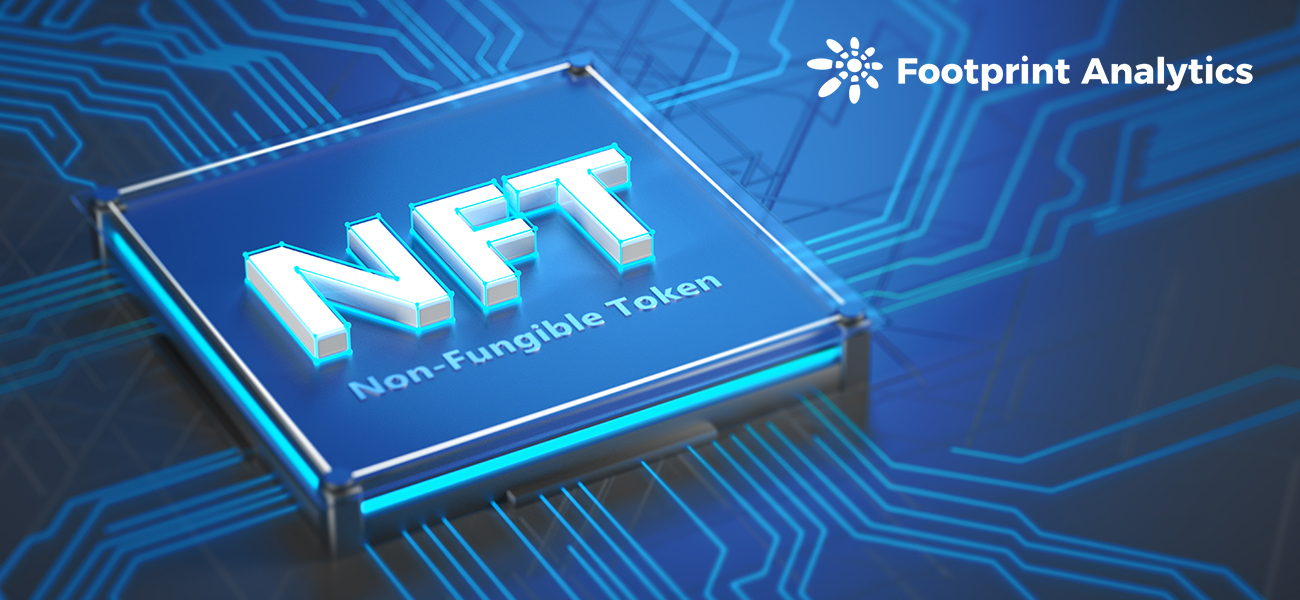

It’s difficult to confer “blue chip” status on projects in an industry as volatile and new as NFTs. Many NFT projects advertise themselves as blue chip projects, but are they?
Footprint Analytics uses its own Blue Chip Index to gauge the strength of the NFT industry. This article will explain how we define blue chips in the context of NFTs, and how this classification can help analysts.
In the context of the stock market, blue chip refers to stock of a company with long-term stable growth, large traditional industrial stocks as well as financial stocks. Also seen as a long-term investment that generates steady returns, the stock is often considered relatively safe, as is the case with companies like Berkshire Hathaway.


Footprint Analytics – BlueChip Index Since 2022
The blue chip stock index pictured above is an index that tracks the market cap share of more than 20 well-known, financially stable publicly traded non-financial companies. It refers to the algorithm of the S&P 500, calculates the sum of all values (in USD) of [X] blue chip NFTs per day, and then divides it by [X] NFTs.
CryptoPunks and BAYC are the first projects that come to mind when thinking about blue chip NFTs. They are considered by everyone to be the industry leaders, mainly because they have the following characteristics.
Footprint Analytics – All Time Top 10 Most Wash Traded Collections
Footprint Analytics – All Time Wash Trading Stats of Bluechip ERC-721 Collections
Therefore, it is not possible to judge whether the project is a blue chip NFT from a single indicator. To determine whether a project should be in the Blue Chip Index, Footprint Analytics looks at 4 other factors:
Quality of design is critical for the long-term success of a project. CryptoPunks, for example, was once sought after for its punk pixel style as an OG NFT, making the pixel art style popular, and many derivatives replicated them, making pixel art projects stand out in the space. So the innovative design art style will make the project stand out from some of the more bland NFTs.
What are the privileges of holding NFT and how useful is it to the user? Will it add value? These are all questions that users should consider. Ongoing utility refers to the benefits that come with being part of the community and holding an NFT, such as the project owner providing a whitelist for minting other projects, airdropping NFTs to holders, etc. This not only increases the life of the NFT but also increases the value of the project. BAYC holders, for example, were rewarded with a BAKC airdrop.
The transaction volume is the basis for verifying the floor price, which is not determined by the holder’s arbitrary pending order price, but through market transactions. It always follows the fluctuations of the market. If the floor price goes up, the volume decreases, and if it goes down, it increases. Therefore, floor price has become the most intuitive blue chip indicator. The higher the floor price of the purchased project, the higher its value.
The community also plays an important role in considering whether an NFT project is a blue-chip NFT. Most blue-chip NFT projects have their own dedicated communities.
In general, NFTs are considered a high-risk investment in a market fraught with speculation and volatility. Blue-chip NFTs are relatively less risky—but anything can happen. Most NFTs fail to build a brand, while blue-chip NFTs have done just that.
Footprint Analytics – Bluechip Collection
BAYC includes 10,000 Bored Apes and entitles the holder to have access to an exclusive online club. Even though it was launched later than CryptoPunks, it surpassed CryptoPunks in over a year.
The major innovation is that BAYC gives the commercial rights of avatar images to the holders and the community, which promotes PFP NFTs to the general public. The floor price has reached as high as 73.15 ETH (as of November 10), which is several times the floor price of other NFTs. It has become a new favorite among celebrities and is arguably the biggest brand in the NFT market. It also released other successful NFT series including MAYC and BAKC.
CryptoPunks was one of the first successful NFT projects. launched in 2017, CryptoPunks has 10,000 unique digital characters, and some of these NFTs were even auctioned off by Christie’s and Sotheby’s. It provided the inspiration and foundation for the ERC-721 standard that later NFTs developed. The project has now been acquired by Yuga Labs.
Azuki is a community-built, decentralized meta-universe brand that is popular for its Japanese manga style and high aesthetic appeal, and for its strong branding capabilities, with the first batch of NFTs selling out in just a few minutes. Azuki has major innovations that have to be mentioned, which are new minting standards, whitelist screening mechanisms, and sales methods.
In summary, blue-chip NFT is a good starting point for users who want to understand the market. It is possible to summarize the characteristics of these projects and analyze the relevant metrics to compare emerging NFT projects, how far they have reached and how far they are from blue-chip NFT projects.
This piece is contributed by Footprint Analytics community.
The Footprint Community is a place where data and crypto enthusiasts worldwide help each other understand and gain insights about Web3, the metaverse, DeFi, GameFi, or any other area of the fledgling world of blockchain. Here you’ll find active, diverse voices supporting each other and driving the community forward.
Footprint Website: https://www.footprint.network
Discord: https://discord.gg/3HYaR6USM7
Twitter: https://twitter.com/Footprint_Data
Denver, Colorado, 24th February 2025, Chainwire
Denver, Colorado, 20th February 2025, Chainwire
Washington, D.C., 18th February 2025, Chainwire
Dubai, UAE, 27th January 2025, Chainwire
Those who enter the market at this time may be surprised to hear that Bitcoin…
George Town, Grand Cayman, 22nd November 2024, Chainwire